Tips and Tricks to Reduce Swelling and Bruising Post-Rhinoplasty

How much bruising and swelling can you expect after rhinoplasty? Our rhinoplasty patients are often excited about surgery and to discover their new nose, but worried about recovery, especially bruising and swelling. Learn what to expect from post-rhinoplasty bruising and swelling and get a few tips and tricks to reduce their occurrence.
Bruising and Swelling After Rhinoplasty – What to Expect
Swelling is a common and expected part of rhinoplasty recovery. Much of the swelling you’ll experience should subside in the first 2 weeks. Swelling can be noticeable but doesn’t keep most of our patients from returning to work, school, and other activities after the first week. Minor swelling may remain after the first few weeks and can take longer to resolve. This residual swelling is typically minor and will resolve in the weeks and months after surgery.
You may be surprised to learn that bruising isn’t common after rhinoplasty. If bruising occurs, it typically happens under the eyes. It should resolve in 7-10 days, typically around the same time you’re ready to return to social activities.
Will I Experience Bruising and Swelling After Rhinoplasty?
Many factors influence the occurrence of bruising and swelling after rhinoplasty. During your consultation, we can give you a better idea of what to expect after your rhinoplasty regarding bruising and swelling. Factors that can influence bruising and swelling include:
- Rhinoplasty Technique- Some rhinoplasty techniques can increase swelling. Dr. Reid can help you understand what to expect after your specific type of rhinoplasty. For example, moving nasal bones can increase swelling, but you may experience very little swelling if only the nostrils are reshaped.
- Extent of the Procedure- Generally, the more extensive a rhinoplasty, the more swelling you can expect. Swelling may be inconvenient for a few weeks, but you’ll enjoy your new nose for a lifetime.
- Your Body’s Response to Surgery– Some patients are more susceptible to swelling than others. Age, skin thickness, circulation, nutrition, and other factors can all influence your body’s response to healing after rhinoplasty.
- Post-Surgical Care– We’ll provide post-surgical care instructions after your surgery. Follow these closely. These instructions will include tips to reduce bruising, swelling, and other complications after rhinoplasty. We’ve created the care instructions to help you have the best possible recovery experience after rhinoplasty.
- Medications– Some medications can increase swelling and bleeding after surgery. Avoiding these medications is important in the weeks before and after your surgery.
- Smoking– Smoking slows the body’s healing response. We require that patients avoid smoking and drinking alcohol during the rhinoplasty recovery process.
Tips for Reducing Bruising and Swelling After Rhinoplasty
If you’re preparing for rhinoplasty these tips can help you reduce bruising and swelling after your procedure. As always, please get in touch if you have questions or concerns during your recovery.
- Follow Recovery Instructions– We provide each rhinoplasty patient with detailed instructions for recovery. Follow the instructions closely. We are here to answer any questions you have throughout the recovery process so please reach out if you need help or if you have a concern.
- Avoid Certain Medications– Avoid blood-thinning medications before surgery and during recovery. If you take a prescription blood thinner, let us know so we can keep you safe during and after surgery. Over-the-counter medications that thin the blood include aspirin and ibuprofen.
- Talk with Us About Supplements– Some supplements and herbal remedies can increase bleeding and thin the blood. Tell us about any supplements, medications, or herbal products you use.
- Use Ice- Ice can reduce swelling after surgery, but only if it is used in the first few days. Apply ice packs to your cheeks several times a day.
- Elevate– Keeping your head elevated can reduce nose surgery swelling. Many rhinoplasty patients sleep in a recliner for the first week or two after surgery.
- Don’t Smoke– Avoid smoking for a few weeks before and after surgery.
- Be Patient– Our best advice for dealing with swelling and bruising after rhinoplasty is simple, be patient. Swelling isn’t fun, but it will resolve, often in just a few weeks. Bruising is uncommon and resolves quickly. Give your body time to heal after surgery. It will happen, but it does take time. If you’re unsure of your appearance after rhinoplasty, be patient. Many patients find that once the swelling fully resolves, they love their new look.
Returning to Work with Bruising or Swelling – What Can You Do?
Are you worried about returning to work, school, and other social engagements with post-rhinoplasty swelling or bruising? Most patients take about a week off from work. During this time, swelling and bruising will reduce dramatically. Many patients aren’t bothered by any residual swelling or bruising when it is time to return to work. There are methods to cover nose bruising and swelling if needed.
Call or contact us online to schedule your rhinoplasty consultation at Restora Austin Plastic Surgery Centre in Austin, TX today. Our expert plastic surgeons, Dr. Ashley Gordan and Dr. Dustin Reid, are ready to help you achieve the rhinoplasty results you’ve been dreaming of. Be sure to visit our rhinoplasty before and after gallery to see some of our actual patients’ success stories!
How Long Do Swelling and Bruising Last After Rhinoplasty?
Not every patient will experience bruising and swelling after rhinoplasty. If bruising and swelling occur, they’re generally localized under the eyes.
Bruising occurs when blood vessels along the eye area get trapped beneath the skin, causing a purple or blue color to appear. After rhinoplasty surgery, it’s not uncommon for blood vessels around the nose and orbital rim to be disrupted, thus creating the appearance of a black eye. Swelling occurs in the same areas and acts as a defense mechanism in response to the trauma.
Most post-operative bruising and swelling should begin to dissipate in 7 to 10 days, if there are no complications. You may notice some residual bruising that has turned yellowish or green for close to a month, depending on how your skin tone.
Preparing for Your Rhinoplasty Surgery
When you come home after rhinoplasty surgery, you’ll be so happy to have a cozy, clean, and comfortable place to rest without all your favorite necessities. Your mission during the week leading up to your surgery is to create your comfy place. Listed below are some best ways to prepare for your recovery:
- Fill your prescriptions
- Confirm your ride to and from the surgical center
- Arrange help for the first day
- Have clean sheets and a made bed that you can come home to. You won’t want to make up your bed after your surgery, so make sure it’s prepared for you.
- Drink plenty of water. Staying hydrated after a surgical procedure can help your body flush out the anesthesia, reduce swelling, promote healing, and ensure your organs are working well to keep you comfortable.
- Cleanse your face twice a day with a gentle cleanser and even a mild exfoliant to remove dead skin cells and debris the day before your surgery. You will have a cast covering the upper portion of your face after surgery, so you won’t be able to wash your skin during that time. Starting your week with clean, clear skin will help reduce breakouts and keep you more comfortable.
- Eat a high protein and vitamin-dense diet. You should also ensure that you have plenty of easy, healthy snacks on hand after your surgery. Many patients have a decreased appetite after surgery and will need to fast the day of their procedure, so having easy, healthy snacks ready and available will help you feel sustained while keeping you comfortable.
- Take vitamins C and D daily for at least a week before your surgery. Vitamin C will help boost your immune system, which is going to be under stress after your procedure. Vitamin D will help replenish what you’re missing from the week you’ll need to stay inside to recover. Vitamin D will also help to boost your mood.
Tips for Managing Pain After Rhinoplasty
Most patients experience some degree of pain or discomfort after rhinoplasty. The feeling is often described as pressure in the middle of the face and nose. This pressure is due to swelling, which is normal after surgery and generally subsides during the first week.
In terms of pain and discomfort management, simple measures like sleeping with a few extra pillows so your head is elevated can help reduce swelling and relieve some of the pressure. You can also apply a cold compress or ice pack to the cheeks, but never directly on the nose. Some patients have found relief sucking on ice cubes.
Follow the pain management plan referred to you by your surgeon. You’ll be prescribed pain medication that you should take on schedule to help you stay ahead of the pain and make resting more comfortable.
Keep yourself distracted with entertainment like your favorite binge-worthy television show, handheld gaming devices, or books.
What Foods Should I Eat After Rhinoplasty?
For the first week after your rhinoplasty, eat foods that are soft and easy to chew. For example, yogurt, oatmeal, scrambled eggs, mashed potatoes, and soup are filling, healthy, and easy to eat. Add fresh fruits that are high in water and nutritional content, such as strawberries, watermelons, apples, and blueberries are a healthy addition to your diet.
After the second week, you should start to feel more comfortable adding in harder foods, but ease into it. Stick with softer foods like roasted chicken or fish and cooked vegetables.
